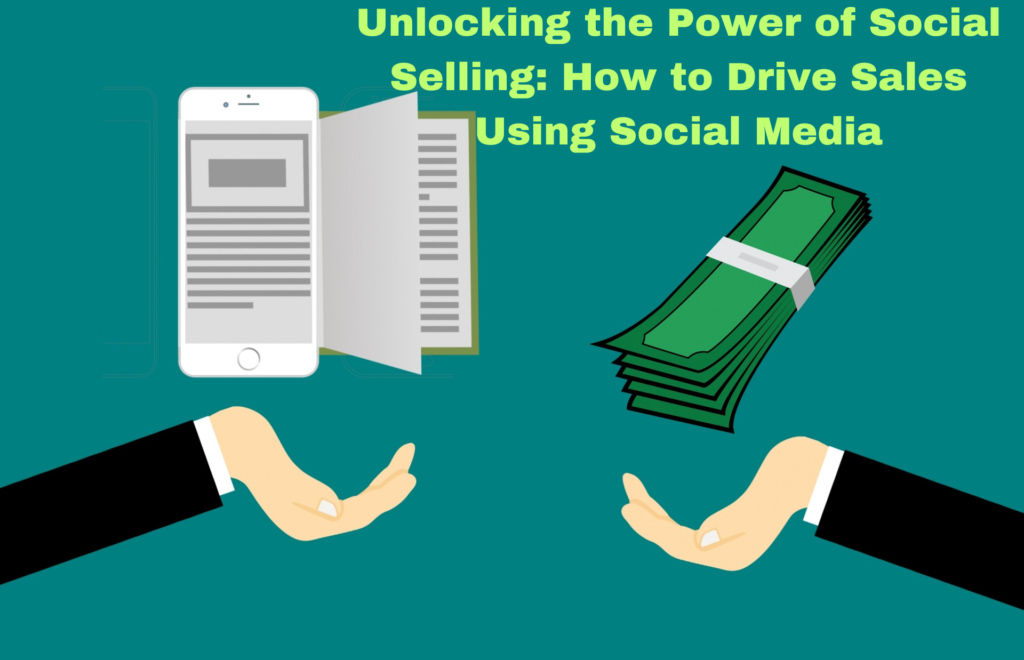Social media’s rise in the modern digital era has completely changed the sales and marketing environment. The result of this change is a brand-new phenomenon known as social selling. Social selling is connecting with potential clients through social media platforms. It also involves relating to and interacting with them. Sincere connections and trust are the foundation of social selling’s potency since they lead to increased sales. Let’s explore how you can use the power of social selling that force to increase sales.

Understanding the Power of Social Selling
Sending out endless sales pitches to your audience is not the goal of social selling. Instead, the focus is on using social media. They interact with prospective clients, comprehend their requirements, and offer answers. It entails interacting with others, exchanging insightful material, and fostering connections.
The Strength of Developing Connections
Relationship development is the foundation of social selling. Customers purchase from people they trust. There is no better place than social media to establish that trust. You position yourself as a reliable counselor rather than merely a vendor. You do this by continuously providing insightful material, and you also have meaningful interactions. And demonstrate sincere concern for your audience’s needs.

Making the Most of the Correct Platforms
Diverse social media networks serve distinct user bases. For example, LinkedIn works well for business-to-business social selling. Facebook or Instagram may be best for consumer-to-consumer social selling. Your social marketing approach depends on knowing where your target audience hangs out.
Content is King
Content is king in social selling. Distribute worthwhile, educational, and audience-relevant material. This might contain news from the sector, infographics, videos, and blogs. Establishing oneself as a thought leader in your field is the aim.
Engaging – Not Just Posting
It’s important to engage. Participate in debates, answer comments, and strike up conversations on your initiative. This interaction shows you’re not just there to make sales. You’re also there to benefit the community.
Individualization Is Important
Customizing your social media communication may greatly influence your marketing efforts. Making a conscious effort to recall people’s names and address them by name may have a significant impact. Customizing your message to their interests may also have a considerable effect.
Making Use of Social Listening
Social listening involves monitoring social media platforms. You look for mentions of your company, your rivals, and industry keywords. This helps you understand industry trends, spot sales prospects, and interact with people who may not contact you directly.

Developing a Powerful Personal Brand
On social media, your brand reflects who you are and your values. A well-crafted personal brand builds credibility and draws in the appropriate crowd. Talk about your encounters, achievements, and even setbacks. Authenticity has a certain attraction.
It’s Important to Be Consistent
Maintaining a consistent social media presence aids in staying in people’s minds. It’s not necessary to update every hour. However, maintaining a regular and steady presence is crucial.
The Influencers’ Role
You may boost your social selling efforts by collaborating with influencers. Influencers may help you reach a larger audience and establish the legitimacy of your goods or services.
Monitoring and Examining Your Work
Monitor important data like engagement rates, click-through rates, and conversion rates. Use this data to gauge the success of your social selling campaigns. You may improve your plan and tactics by using this data.
Problems and Solutions for Social Selling
Despite its effectiveness, social selling is not without its difficulties. These include assessing return on investment. Determine the ideal tone for your business. Keep up with social media developments. To overcome these obstacles, keep learning. Try out different tactics and use analytics tools.
Social Selling’s Future
Social selling is always changing. Keeping up with emerging technologies, platforms, and trends is critical. AI and machine learning are developing. We may expect more individualized, effective methods for interacting with clients on social media.
Final Words
The power of social selling lies in creating genuine connections and offering value. It’s a long-term approach. When executed well, it may greatly increase your sales and brand recognition. It’s not a fast cure. You can fully realize the promise of social selling by getting to know your audience. Connect with them authentically. Produce good content. Use the appropriate technologies.
Accept the power of social selling. See how it changes your sales approach. This results in deeper client connections and higher conversion rates. Recall that social selling is really about people. Make an effort to engage, connect, and add value, and the sales will come.

Frequently Asked Questions on Social Selling (FAQs)
Here are some frequent questions people ask about the power of social selling.
What is social selling, and how is it different from regular selling?
Social selling is a new way to do sales. It uses social media to connect with possible buyers. It builds relationships and offers value through content and interactions. In traditional selling, people often use cold calls and one-time sales techniques. But in social selling, people use online networks to build trust and long-term relationships.
Would social selling be good for all kinds of businesses?
Social selling can help all kinds of businesses, whether big or small. Social selling lets you connect with your audience, learn what they need, and make your products fit those needs, whether you’re a B2B or B2C business. It works especially well for companies that want to take the lead in their field and gain the trust of tech-savvy people.
What are some ways I can tell if my social selling is working?
There are many ways to measure how well social selling is working. You can look at the number of engagements (likes, comments, and shares), the size of your network, the number of leads you get, and the number of sales you make. Using tools like social media analytics and CRM connections, you can learn much about how your social selling tactics work.
How can I make content that works best for social selling?
Blog posts, industry news, infographics, and how-to tips are all good types of content for social selling. Movies that give your audience something of value are also good for social selling. Stories and testimonies from real people can also be very powerful. It’s important to ensure the material is useful and interesting and establishes you as an expert and reliable source in your area.
How long should I spend each day on social selling?
It would be best to spend different amounts of time on social selling based on your business goals and the number of people following you. Generally, you should connect with your network, post content, and monitor social interactions for at least 30 minutes to an hour daily. It’s not how much time you spend but how often you do something more important because it helps you build and keep ties.
In social selling, stay ahead of the game! If you sign up for our weekly email, we’ll send you insider tips, new ideas, and trends to your inbox. Don’t miss out; join our group of smart buyers right away!





